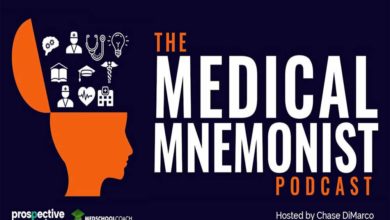Chase DiMarco talks about task management and prioritization. He shares insights and tips from Brian Tracy’s book called “Eat That Frog”. Learn how to organize your to-do list effectively using these 5 principles.
- [01:26] Planning Saves Time
- [03:30] The Law of Three
- [05:24] The 80/20 Rule
- [07:53] The ABCDE Method
- [11:37] How to Tackle Big Tasks
- [14:30] The Law of Forced Efficiency
- [16:45] Summary of Key Points
The Law of Three
What are the three things on your to-do list that will produce the biggest benefits? Identify the top three tasks that will be the most rewarding. Once you’ve done that, choose which of the three tasks you dread the most. The task that you find the hardest to do is called your “frog”. Brian Tracy says to “eat that frog” first, meaning you need to tackle the most important concern immediately. Often times we delay that dreaded responsibility up until the last moment which ends up hurting us later on.
The 80/20 Rule
The 80/20 Rule or the Pareto Principle states that 20% of what we do produces 80% of the results. In the context of medical school, you can rephrase the question to “What is 20% of the material that will make up 80% of the exam?” When listening to lectures, the most crucial points are usually emphasized during the presentation. When reading textbooks, the need-to-know parts are usually in bold text. When using flashcards, the most helpful questions will be about the main material. Identify the highest yield content or tasks, then focus on it.
The ABCDE Method
The ABCDE method is a rating system for your tasks. Here is what each letter means:
- A – Very important
- B – Important
- C – Nice to do
- D – Delegate
- E – Eliminate
Label each task with a letter. If you have more than one task in a category, break it down even further (i.e. label tasks with an A rating as 1A, 2A, 3A, and so on). Using this system, tasks under the rating of D and E must either be delegated or eliminated. These are considered as low yield responsibilities and potential time wasters.
Getting Large Tasks Done
To get long term projects done, you must begin with the end in mind. Know your goal before you start with execution. According to Brian Tracy, there are two way to complete big tasks: the salami slice and the Swiss cheese approach. The salami slice method is about breaking down the large task into smaller steps. Accomplish each step until the project is done. The Swiss cheese method is like taking small bites at a time until you finish the assignment. Allot a small period of time to that task daily and eventually you’ll get it done.
The Law of Forced Efficiency
The Law of Forced Efficiency states, “There’s never enough time to do everything, but there’s always enough time to do the most important thing.” Putting the other frameworks to use, you must “eat the frog” or concentrate on tasks with A, B, or C ratings. Related to this is Parkinson’s Law which says, “Work expands to fill the allotted time.” Instead of putting off tasks, allocate a specific time frame to complete it. In this way, you are completely productive in that interval. The more that you plan, the better the outcomes will be.
Listen to Medical Mnemonist’s last episode: 7 Habits of Highly Successful Medical Students.
Share your experiences, tips, and suggestions to [email protected]. Or you can directly reach out to Chase on LinkedIn, Twitter, or Instagram. Join the Medical Mnemonist Master Mind Facebook group and find our Blog posts, Podcasts, and other Resources at FreeMedEd.org!
